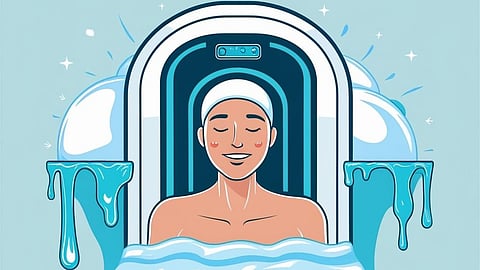Other Benefits of Cryotherapy
Cryotherapy isn’t just about fat reduction. Many people use it for a variety of health and wellness benefits:
Pain relief and muscle recovery: Athletes commonly use cryotherapy to recover from intense training. Cold therapy reduces inflammation and numbs pain receptors, which helps with soreness and injury recovery.
Reduced inflammation: By constricting blood vessels and reducing the release of inflammatory molecules, cryotherapy can be beneficial for those with chronic inflammatory conditions such as arthritis.
Mental health support: Exposure to cold has been linked to the release of endorphins and other mood-enhancing chemicals. Some early research suggests cryotherapy may have a positive impact on anxiety and depression symptoms.
Improved skin health: Increased blood circulation and oxygenation after a session can result in clearer, more radiant skin. Cold exposure may also stimulate collagen production, which helps reduce signs of aging.
Risks and Limitations
Despite its benefits, cryotherapy is not without risks and limitations:
Frostbite and burns: Improper use or lack of protective gear during whole-body sessions can lead to frostbite. Localized sessions may cause skin burns.
Nerve damage: Excessive or improperly administered localized cryotherapy can result in numbness or even long-term nerve issues.
Not for everyone: People with conditions such as Raynaud’s disease, cold allergies, severe hypertension, and cardiovascular problems should avoid cryotherapy. Pregnant individuals are also advised against it.
Temporary results: Cryotherapy may require ongoing sessions to maintain benefits. It should not replace a healthy diet or exercise regimen.


